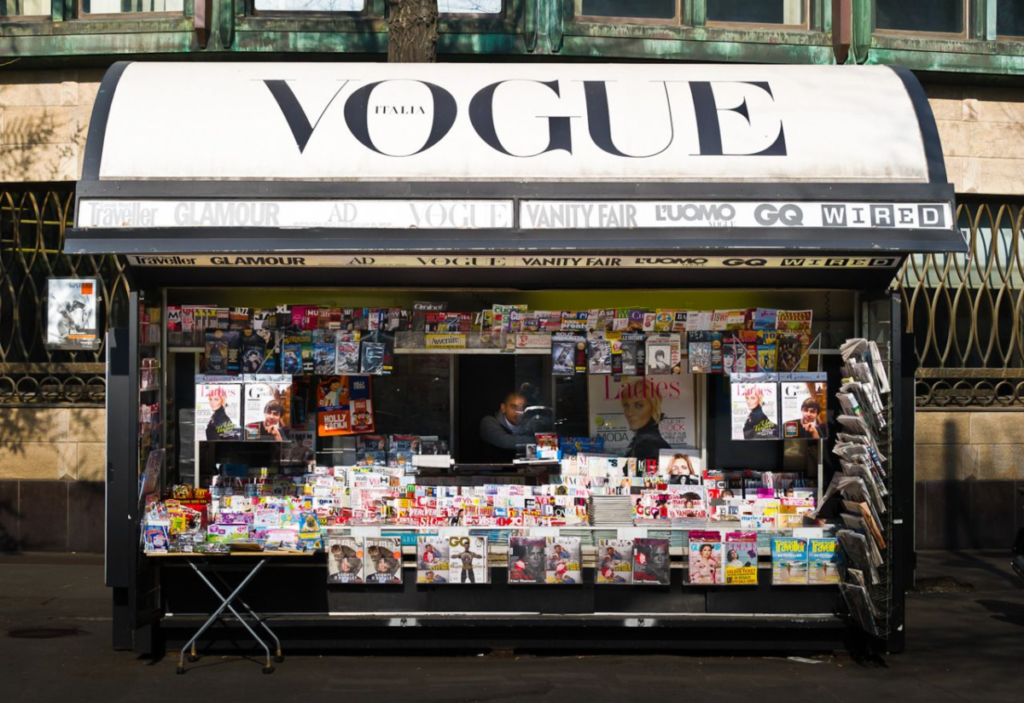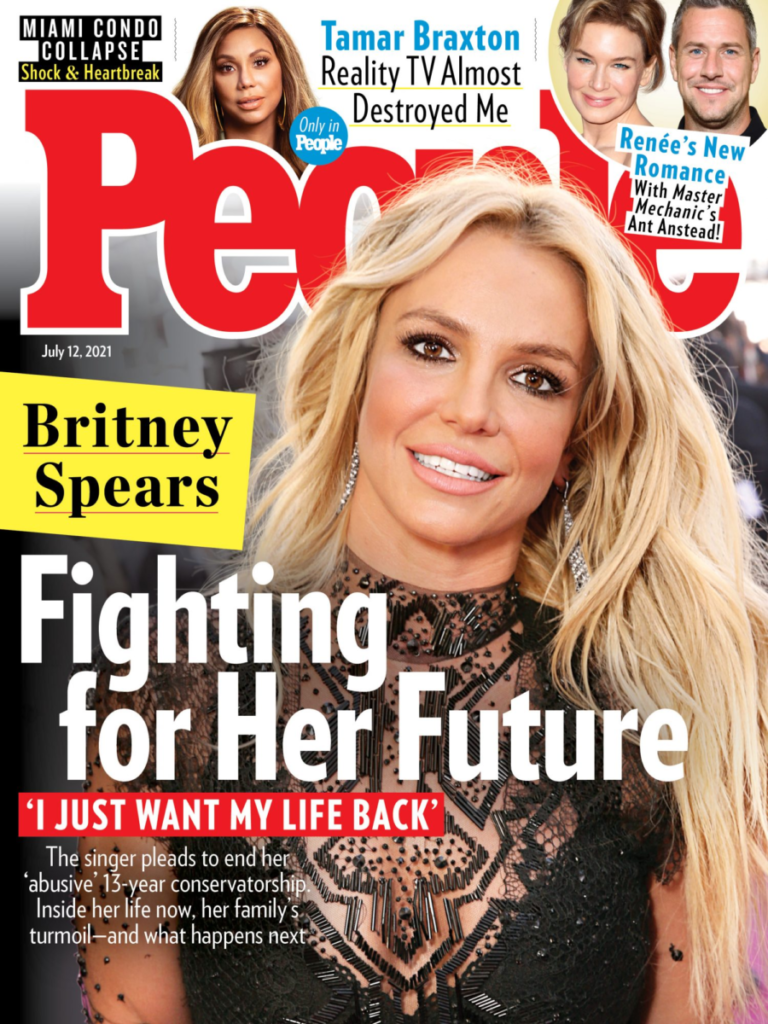
Background
Throughout recent history, corporations like news outlets and tabloids have played a large role in shaping public opinion. Earning millions in profit every year, an entire industry exists to gossip about famous figures. Smear campaigns against celebrities have ended numerous careers, mainly those of female celebrities, while others have been constantly ostracized and hounded by paparazzi throughout their time of recognition. This article explores how the media has impacted Britney Spears and affected her livelihood, as well as how tabloids negatively impacted other celebrities. Throughout the last few decades, the media has caused Britney Spear’s rise, fall, and resurgence, in the same ways it did to other artists’ careers, with some succumbing to the negativity and others finding their own way of overcoming it. The media and news outlets have strong influence on the livelihood and outcome of female celebrities and their careers.
A Look Into the Fame of Britney Spears:

Britney’s Personal Life
Britney Jean Spears was only eighteen years old when her famous song “…Baby One More Time” was released. The song quickly became a success, and Britney’s career took off from there. From a young age, she appeared in several children’s shows, as her parents kept searching for talent agents for her. At age fifteen, Spears began auditioning for music labels. After signing to Jive Records, she was prepped, almost manufactured, into becoming a marketable “teen idol”, who was meant to appeal to a wide demographic of young consumers. Spears developed a performance-focused approach, where she danced to intense choreography rather than focusing on live singing, which led to her being criticized and compared to more powerful singers.

In 2004, Spears fired her long-term manager, which many saw as her separation from the media and the start of her freedom. At one point, while filming for a music video, Britney injured her knee, causing her to get surgery and step away from the spotlight as she recovered. During this time, she got married twice, with her first marriage lasting a little over two days. Her second marriage, to Kevin Federline, lasted over three years, and the couple had two children together Due to several different instances, like being photographed driving with her child in her lap2, she eventually started being labelled as a bad mother, while Federline became seen as a loving father as his media approach remained focused on the importance of the kids as the two fought for custody during their divorce.
In 2008, after refusing to hand over her children to her now ex-husband, her home became surrounded by cops and paramedics, and she was eventually placed under a hospital lockdown for a mental health evaluation. Spears was then placed under legal conservatorship to her father due to her mental instability, causing her to lose the right to make calls surrounding her career and personal life, such as things like getting married or pregnant. Following the creation of this conservatorship, her original manager was rehired, and a restraining order was filed against her newer manager, with her family alleging that he “controlled and manipulated” her. After this situation passed, new magazine articles were published, with Britney speaking out about how she had made mistakes and let herself fall to controlling figures in her life.

Britney as a Revenue Producer
There came a tipping point in her life where news outlets focused less on Britney’s music and more on her as a person or character. Photo agency X17 earned $2.5 million from pictures of Spears in just one year, with the singer making up around 30% of the company’s revenue, following her almost 24/7 for exclusive images of her day-to-day life. Spears was discussed so often that she became the most searched celebrity on Yahoo for seven of the eight years between 2001 and 2008, despite not releasing music between 2005 and 2007. The reason for all of this topic despite the lack of music can be attributed to the extensive coverage of her divorce. Spears was constantly hounded by paparazzi about this and claims over her parenting, which led to many publicized breakdowns. This led to the now famous instances where she was photographed for famously shaving her head and beating a paparazzi car with an umbrella.

From there she was used for several revenue ventures, going on tours with nearly 100 concerts each, creating a fragrance brand, and appearing on variety shows, and staging a residency in Las Vegas. Spears kept engaging in this, as well as smaller projects, until a second Las Vegas residency was cancelled months before it was scheduled to start in 2019. Following this, Britney disappeared from social media, causing tabloids to speculate about her disappearance. Around the same time, a domestic violence dispute between Spear’s father and one of Britney’s young children resulted in him having a restraining order against him. These events caused Britney to request that the court end her conservatorship, which she had now been in for over ten years.

The #FreeBritney Movement
Eventually news outlets began to investigate the financial aspect of her conservatorship, finding that while it was highly profitable for her family and lawyers, Britney made relatively little money compared to other female celebrities that were of less fame and success. Thanks to the tabloids exposing her conservatorship dynamic, many fans created an online movement for her, and the #FreeBritney movement took off as many advocated for her independence. News outlets helped spread word of the situation by explaining what conservatorships were as well as how they worked, and several documentaries by the New York Times, like Framing Britney Spears and Controlling Britney Spears helped sway public opinion on the situation. In 2021, after thirteen years, Britney’s father stepped down as her conservator and was later officially stripped of the title by a court, freeing Britney from control of her family and management team.
Ultimately, while the media and tabloids helped Britney and acted along activists fighting for the liberation of a female celebrity, they were ultimately the reason why she was ever in such a situation. It is safe to say that without pressures of tabloids and magazine covers claiming that Britney’s persona and reputation was falling apart, or accusations of being a terrible mother causing the general public to dislike her, she may have never had such publicized breakdowns. These breakdowns, like shaving her hair or beating a paparazzi car were used as evidence by tabloids of her deteriorating mental health, and as reasoning for her conservatorship. It was not until other news outlets exposed how she was financially taken advantage of that the narrative around her was rewritten.
Could History Repeat Itself?
While Britney Spears is an almost extreme example, being well-known not just for the events that took place but the influence that news outlets played in popularizing the situation, her case is not an isolated one.


Another well-known example would be Amy Winehouse. The two were often compared for their amount of tabloid coverage in the 2000s. It was no secret that Amy Winehouse suffered from substance abuse issues, discussing her usage throughout her albums and even her most popular songs. Tabloids often portrayed her as a troubled soul, and even while she was alive, news outlets discussed how obvious her deterioration was and how close to death she inevitably was. Her descent into serious addiction was documented graphically and without sympathy, with the New York Times writing “Performers thrive on attention, and sometimes admit that it’s an addiction; now, the Internet enables that addiction all too easily. The unintended consequence is that we can now watch stars self-destruct in real time.”5 Throughout her fame she was constantly exposed for marijuana possession, usage of crack cocaine, and alcohol abuse. Due to the sheer amount of media coverage around her addictions, the New York Times speculated on how Amy’s scandals were so public. In one video leak of Amy with drugs, the newspaper states it’s possible that she was “keepin’ it real”, that she trusted the recorder enough to believe they wouldn’t leak it, or that she was simply oblivious to the potential risks of the video getting out.5
Because of all of these different attitudes towards her substance abuse, Winehouse was given little grace even in her death. Passing away at the age of 27 in 2011, tabloids almost insinuated that it was bound to happen eventually. While Amy herself said that she didn’t care about her issues, those close to her also did not make an effort to help her, with her father deeming it unnecessary for her to go to rehab6. As The Guardian mentioned around the time of her death, “Perhaps the most startling thing about Amy Winehouse’s death was how startled people were by it.”7
Where Does This Take Us?
All of this begs the question, is there any way to change this? Will tabloids always pick a celebrity to ostracize, chasing them with paparazzi to see if they mess up? It’s possible the answer might be yes. While Britney Spears and Amy Winehouse are just two examples, female celebrities are constantly used as cover stories for news outlets. Amy Winehouse’s video using drugs was widely distributed, while male actor Heath Ledger was seen at a party with drugs involved, though his story was not published out of respect to his family.8 The actor unfortunately passed away a few years later due to a prescription medication overdose. While they were similar topics, Amy’s addiction was publicized and constantly discussed, while Ledger’s was kept as more private information.
In a similar fashion, within the same magazine, Owen Wilson’s cover story discussing his suicide attempt was only a cover story once, while Britney Spears’s stay in a psychiatric hospital after her breakdowns was used for cover stories on six separate occasions.8 The editor in chief of US Weekly admitted to downplaying both Wilson’s and Ledger’s stories citing public opinion and sentiment towards them as the main reason, claiming that readers “tend to be more sympathetic toward[s] young men in crisis.”8 This draws the question: Are female celebrities not worthy of the same respect? As female celebrities are hounded by the media to the point where their career risks falling apart, male celebrities are covered by and protected by the same outlets. Take both Spears and Winehouse as examples of instances in which the media could have made an impact to help them. In Spears’s case help could have come earlier, while in Winehouse’s case help from the media never truly came.
As we continue in this day and age where we now have even more forms of absorbing news, from watching news channels and reading newspapers, to learning breaking news from various social media platforms, it is important to remember that these breaking news stories may just be history repeating itself. The next time a celebrity makes headlines, consider whether there has been a pattern of negative press against said person, the start of a smear campaign that targets their image. Also consider whether the reception to their news has been hypocritical, with a male celebrity getting caught for the same action around the same period of time, to little negative press. By remembering the ways that the media has dramatically impacted so many female celebrities and their lives, we can start looking at news through an objective lens and prevent other celebrities in distress from becoming the next “star that has fallen from grace.”
References
1. MTV. “Britney Spears and Parenting: A Timeline of Tumult.” MTV, MTV, 2 Oct. 2007, www.mtv.com/news/thndsz/britney-spears-and-parenting-a-timeline-of-tumult. Accessed 6 Dec. 2023.
2. “Britney under Scrutiny, but No Charges.” Cbsnews.com, CBS News, 8 Feb. 2006, www.cbsnews.com/news/britney-under-scrutiny-but-no-charges/. Accessed 6 Dec. 2023.
3. “Deconstructing Britney Spears: Stardom, Meltdown and Conservatorship.” Journal for Cultural Research, 2021, www-tandfonline-com.proxy.library.emory.edu/doi/full/10.1080/14797585.2021.2018663, https://doi.org/10.1080//14797585.2021.2018663. Accessed 6 Dec. 2023.
4. Us Weekly Staff. ““#TBT with Us” Podcast: Britney Spears, Kevin Federline’s Relationship.” Us Weekly, 15 Mar. 2018, www.usmagazine.com/entertainment/news/tbt-with-us-podcast-britney-spears-kevin-federlines-relationship/. Accessed 6 Dec. 2023.
5. “In Real Time, Amy Winehouse’s Deeper Descent (Published 2008).” The New York Times, 2023, www.nytimes.com/2008/01/24/arts/music/24wine.html. Accessed 6 Dec. 2023.
6. “Amy Winehouse Documentary Lets Nobody off the Hook (Published 2015).” The New York Times, 2023, www.nytimes.com/2015/06/30/arts/music/amy-winehouse-documentary-lets-nobody-off-the-hook.html. Accessed 6 Dec. 2023.
7. Petridis, Alexis. “Amy Winehouse – a Losing Game.” The Guardian, The Guardian, 24 July 2011, www.theguardian.com/music/2011/jul/24/amy-winehouse-a-losing-game. Accessed 6 Dec. 2023.
8. “Boys Will Be Boys, Girls Will Be Hounded by the Media (Published 2008).” The New York Times, 2023, www.nytimes.com/2008/02/17/fashion/17celeb.html. Accessed 6 Dec. 2023.
